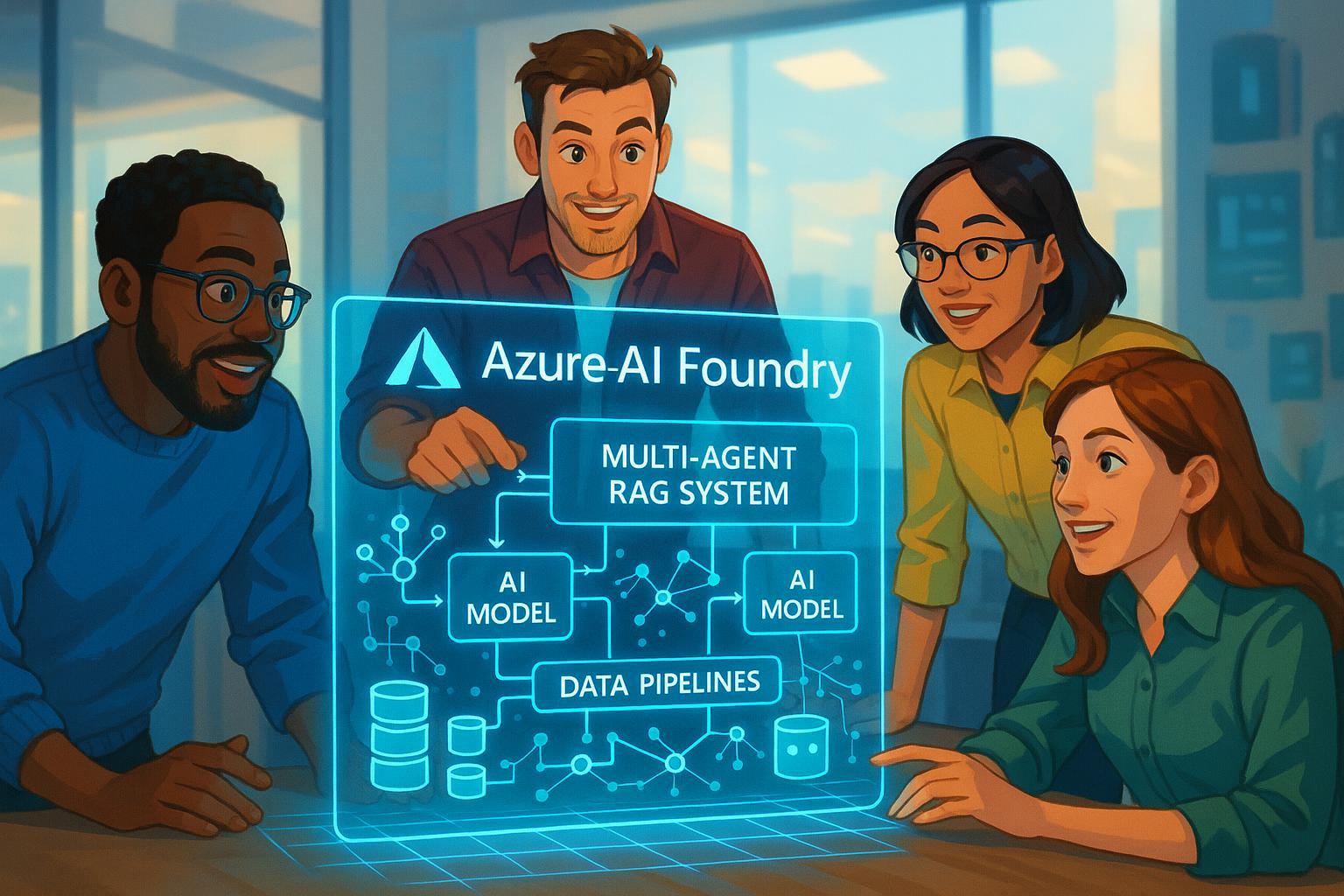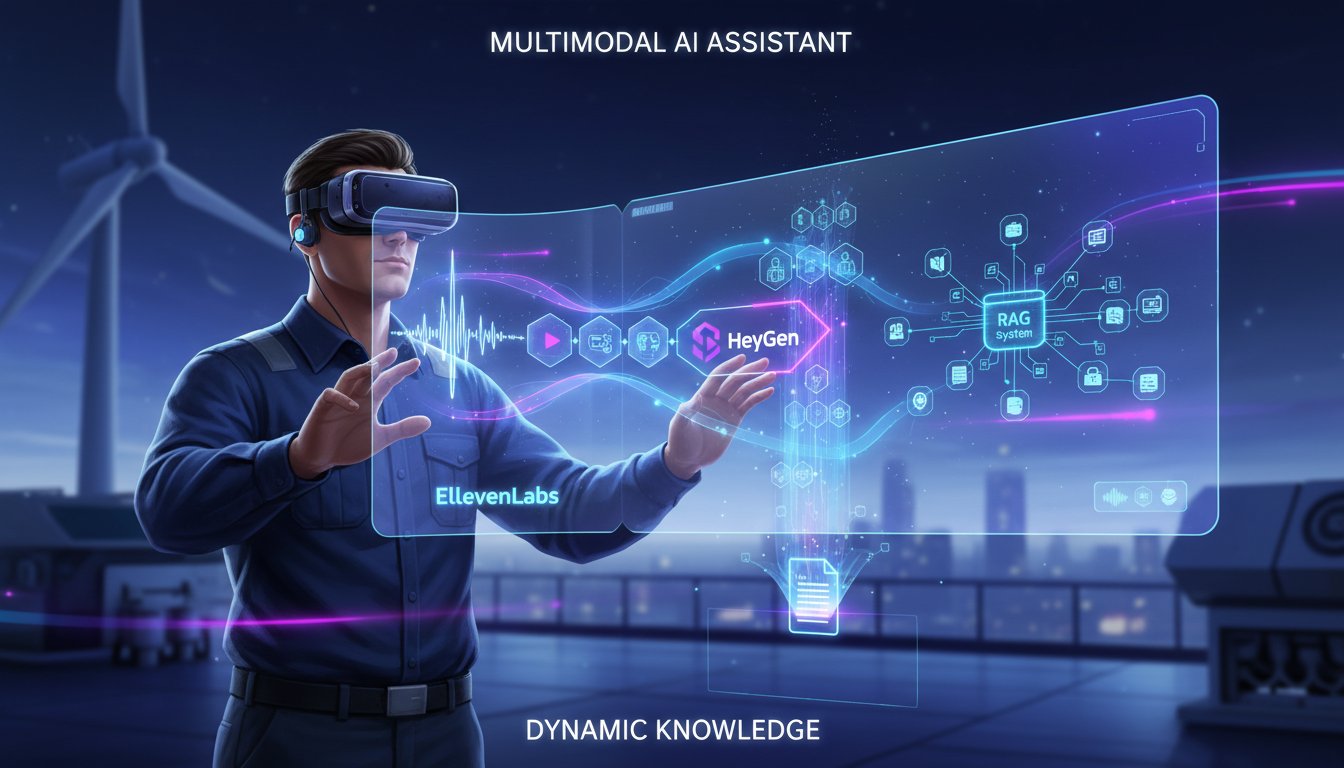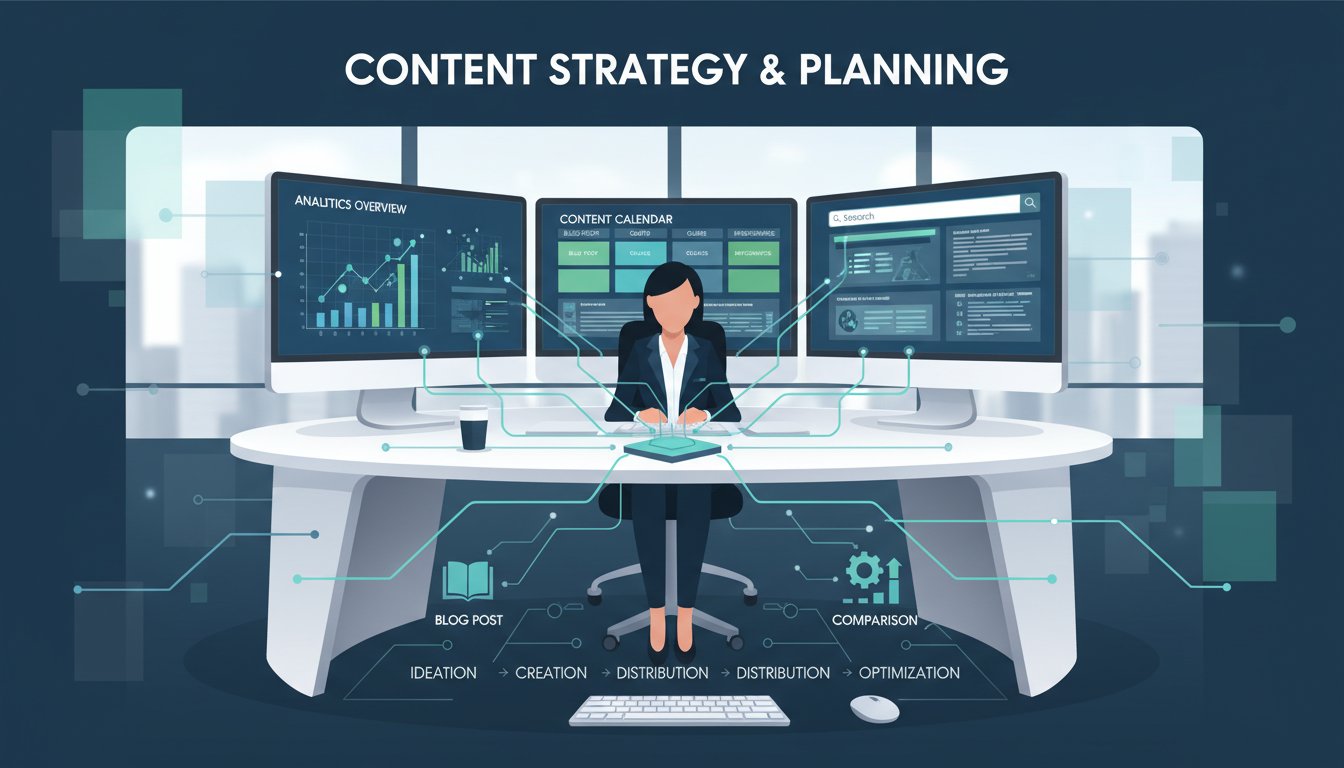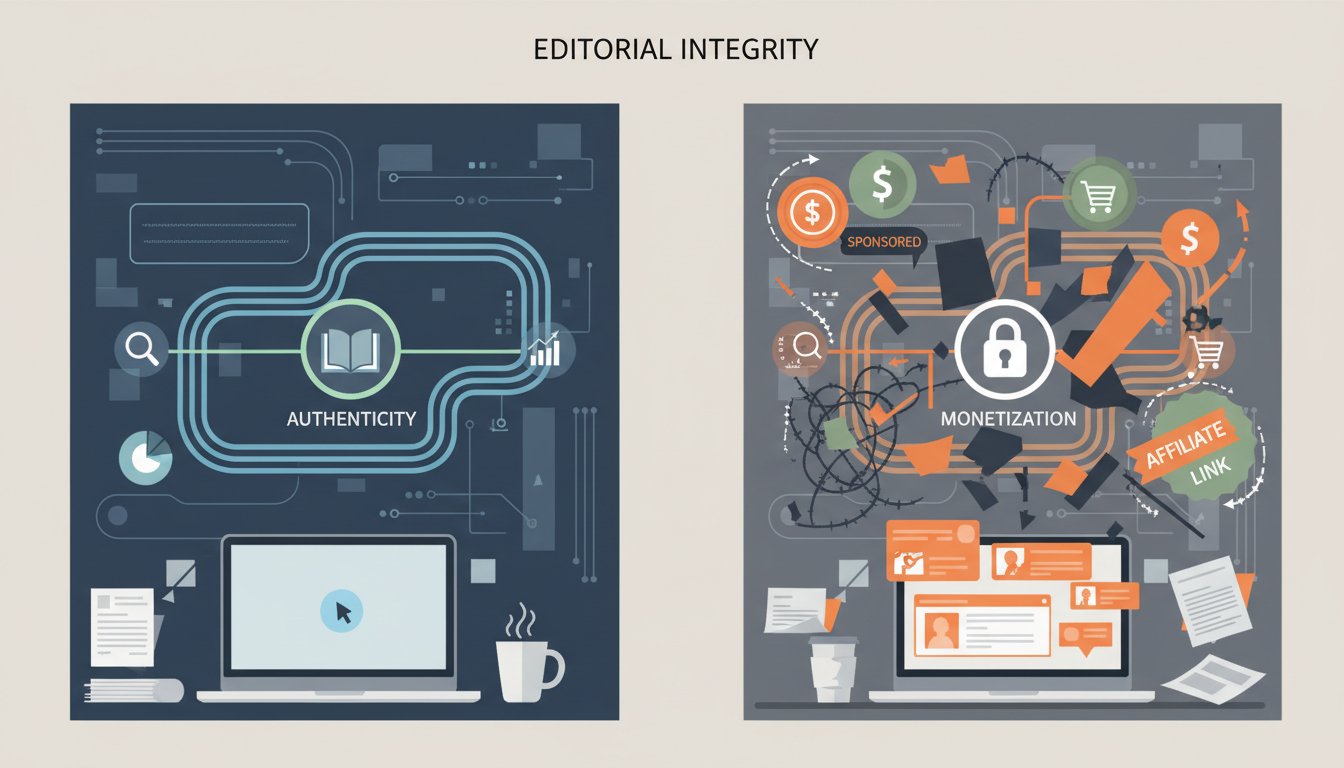Microsoft Build: What the New ‘Agentic Web’ and AI Tools Mean for Enterprise RAG
Introduction: The AI Tidal Wave from Build 2025
The air was electric. Microsoft’s Build 2025 conference wasn’t just another tech event; it was a declaration, a glimpse into a future profoundly reshaped by artificial intelligence. With over 50 new AI tools and platforms announced, the message was clear: the era of truly intelligent, autonomous AI systems is dawning. For those of us deeply entrenched in the world of AI, and particularly in Retrieval Augmented Generation (RAG), these announcements are not just exciting—they’re pivotal. They signal a fundamental shift in how we’ll design, deploy, and interact with enterprise-grade AI solutions.
The challenge, as always with such large-scale pronouncements, is to cut through the buzz and understand the tangible implications. What does Microsoft’s vision of an “agentic web” truly mean for organizations building or looking to build sophisticated RAG systems? How will these new tools and frameworks influence the architecture of our knowledge retrieval and generation pipelines? The core of these developments, as reported by outlets like VentureBeat in their coverage titled “Microsoft announces over 50 AI tools to build the ‘agentic web’ at Build 2025,” points towards AI agents equipped with persistent memory and collaborative capabilities—concepts that resonate deeply with the principles of advanced RAG.
This post aims to dissect these groundbreaking announcements. We’ll explore the key concepts—the “agentic web,” persistent memory, multi-agent systems, and the new developer arsenal unveiled by Microsoft. More importantly, we will connect these dots directly to the world of Enterprise RAG. By the end, you’ll have a clearer understanding of how this evolving landscape, supercharged by Microsoft’s innovations, is set to redefine what’s possible with RAG, pushing it from a powerful technique to a foundational pillar of the next generation of enterprise intelligence. Prepare to explore how your RAG strategies might need to adapt and evolve in this exciting new chapter of AI.
The Dawn of the “Agentic Web”: More Than Just Chatbots
Microsoft’s central theme at Build 2025 was the emergence of the “agentic web.” This isn’t merely an incremental update to existing AI; it’s a paradigm shift. Imagine a digital ecosystem where AI systems, or “agents,” are not just reactive responders to our queries but proactive, autonomous, and collaborative entities working on our behalf. This vision moves beyond the current generation of chatbots or specialized AI tools operating in silos.
The agentic web, as conceptualized by Microsoft, envisions a network of intelligent agents capable of understanding context, learning from interactions, and coordinating with other agents to accomplish complex tasks. Think of a personal AI assistant that doesn’t just schedule meetings but also anticipates your information needs for that meeting, gathers relevant data from various enterprise sources, and even drafts preliminary briefing notes by collaborating with other specialized AI agents.
This concept has profound implications for how businesses operate and how information is managed and leveraged. For instance, in research and development, an agentic system could autonomously track new scientific papers, cross-reference findings with internal experimental data, and flag potential breakthroughs to human researchers. In customer service, a team of agents could collaborate to resolve complex issues, with one handling diagnostics, another accessing historical data, and a third communicating with the customer, all seamlessly orchestrated. This level of proactive intelligence and collaboration is what Microsoft is aiming to empower with its new suite of tools and platforms, setting a new benchmark for AI capabilities.
Persistent Memory: Why RAG is a Star Player in Microsoft’s Playbook
For these AI agents to function effectively within the agentic web, one capability is paramount: persistent memory. An agent that cannot remember past interactions, learn from new information, or recall relevant context is severely limited. Microsoft recognizes this, and it’s here that Retrieval Augmented Generation (RAG) steps into the spotlight.
The VentureBeat article covering Build 2025 explicitly highlights Microsoft’s emphasis on AI agents with persistent memory, citing “structured Retrieval-Augmented Generation (RAG)” as a key technology to enhance AI recall from large datasets. This is a crucial acknowledgment of RAG’s role in making AI agents truly intelligent and context-aware.
What is Persistent Memory in AI Agents?
Persistent memory allows an AI agent to:
* Retain knowledge from previous conversations and interactions.
* Continuously learn and update its understanding based on new data.
* Access and utilize vast repositories of information to inform its actions and responses.
RAG: The Engine for Effective Agent Memory
This is precisely where RAG excels. RAG systems ground Large Language Models (LLMs) in factual, up-to-date information by retrieving relevant data from external knowledge bases before generating a response. In the context of AI agents:
* RAG provides the mechanism for agents to tap into extensive enterprise databases, document repositories, or even the live web, effectively giving them a dynamic and expansive memory.
* Structured RAG, as mentioned by Microsoft, implies an even more sophisticated approach, likely involving knowledge graphs or other organized data structures. This allows for more precise retrieval and better contextual understanding, enabling agents to access not just documents but specific facts and relationships within those documents.
Consider an enterprise RAG system powering a financial analysis agent. With persistent memory enabled by RAG, this agent could recall previous market analyses it performed, incorporate real-time financial news retrieved from trusted sources, and access historical company performance data from internal databases—all to provide a comprehensive and contextually rich assessment. Microsoft’s strategy underscores that RAG is no longer just a bolt-on to LLMs; it’s a core component for building intelligent agents with reliable and useful long-term memory.
Beyond Solo Acts: The Power of Multi-Agent RAG Systems
Microsoft’s vision extends beyond individual intelligent agents to multi-agent systems. This is the idea that multiple specialized AI agents can collaborate, communicate, and coordinate their actions to solve problems or execute workflows that are too complex for a single agent. This approach mirrors how human teams often work, leveraging diverse skills and expertise.
The implications for Enterprise RAG are transformative. Instead of a monolithic RAG system trying to do everything, we can envision a future where a constellation of RAG-powered agents work in concert.
How Multi-Agent Architectures Elevate RAG:
- Specialization: Different RAG agents could be optimized for specific tasks or knowledge domains.
- Example: One agent might be an expert in retrieving legal documents, another in parsing technical specifications, and a third in synthesizing customer feedback. A fourth agent could then orchestrate these inputs to answer a complex query about product compliance and market reception.
- Scalability and Resilience: Distributing tasks across multiple agents can improve system performance and robustness. If one agent encounters an issue, others can potentially compensate or adapt.
- Complex Workflow Automation: Multi-agent systems can automate intricate enterprise processes that involve multiple data sources and decision points.
- Example: In supply chain management, a RAG agent could monitor inventory levels, another could track shipping logistics by retrieving data from carrier systems, and a third could analyze market demand trends from news and reports. Together, they could proactively flag potential disruptions and suggest rerouting options.
Microsoft’s focus on multi-agent systems suggests that the future of advanced RAG solutions lies in such collaborative architectures. Building these systems will require new tools for agent orchestration, communication protocols, and robust data governance—all areas Microsoft is addressing with its recent announcements.
New Tools & Standards: Microsoft’s Blueprint for Building the Agentic Web
To turn the vision of an agentic web and sophisticated multi-agent RAG systems into reality, developers need powerful tools and common standards. Microsoft’s Build 2025 announcements delivered precisely this, unveiling a new arsenal designed to empower the creation, deployment, and management of next-generation AI agents.
Key Enablers for Advanced RAG Development:
-
Azure AI Foundry and Agent Service:
- Microsoft introduced Azure AI Foundry as a platform to accelerate the development of AI solutions, with a specific Agent Service. These tools are designed to simplify the building, orchestration, and management of AI agents, including those leveraging complex RAG pipelines.
- For RAG professionals, this means potentially streamlined workflows for integrating data sources, managing retrieval mechanisms, fine-tuning generation models, and deploying agents at scale. The Agent Service, in particular, is expected to support the orchestration of multi-agent systems, which is critical for sophisticated RAG applications.
- Data Point: The announcement of over 50 new AI tools signifies a substantial investment in this developer ecosystem.
-
Interoperability through Open Standards: MCP and A2A:
- A critical piece of the agentic web puzzle is interoperability. Agents built by different developers or for different purposes need to communicate effectively. Microsoft is championing open standards like the Model Context Protocol (MCP) and protocols such as Agent2Agent (A2A).
- MCP aims to provide a standardized way for AI models and agents to exchange context and information, ensuring that data passed between them is understood correctly. This is vital for RAG systems that might need to interact with other AI services or data silos within an enterprise.
- A2A protocols will define how different AI agents discover, communicate, and collaborate with each other. For multi-agent RAG systems, this means a standardized framework for agents to request information, share retrieved data, and coordinate on generating final outputs.
- Expert Insight: The push for open standards is widely seen as crucial for fostering a vibrant and competitive AI ecosystem, preventing vendor lock-in and encouraging innovation in areas like RAG.
These new platforms and protocols are not just abstract concepts; they are practical tools that will shape how enterprise RAG systems are architected and integrated. They promise to lower the barrier to entry for developing advanced agentic solutions and encourage more modular, interoperable RAG designs.
The Implications for Enterprise RAG: Navigating the Next Frontier
Microsoft’s announcements at Build 2025 are more than just a roadmap for their AI strategy; they are a clear signal to the entire industry, especially for those working with Enterprise RAG. The convergence of the agentic web concept, persistent memory powered by RAG, multi-agent systems, and new enabling tools signifies a major evolution. So, what are the key takeaways and implications for RAG professionals and organizations?
-
RAG is Becoming Foundational, Not Just Additive:
- The explicit mention of “structured RAG” as a core technology for agent memory elevates RAG from being a useful technique to a fundamental building block for future intelligent systems. Organizations should view their RAG capabilities as a strategic asset.
-
Think Beyond Single-Purpose RAG:
- The rise of multi-agent systems challenges us to design RAG solutions that can participate in broader, collaborative workflows. Consider how your RAG systems can be modularized or specialized to interact with other AI agents.
- Example: A customer service RAG might need to hand off a query to a more specialized technical RAG agent, requiring seamless data and context transfer.
-
Embrace New Tools and Platforms:
- Tools like Azure AI Foundry and its Agent Service will likely become central to developing and deploying sophisticated RAG-powered agents. Staying abreast of these platforms and understanding their capabilities will be crucial for maintaining a competitive edge.
-
Prioritize Interoperability and Standards:
- As AI ecosystems become more interconnected, adherence to standards like MCP and A2A will be vital. Design your RAG systems with interoperability in mind, ensuring they can communicate and share data effectively with other systems.
-
Security and Governance are Paramount:
- Microsoft’s inclusion of features like Entra Agent ID (for secure agent identity) and Purview integration (for data governance) highlights the critical importance of security in the agentic era. As RAG systems access and process potentially sensitive enterprise data to provide memory for AI agents, robust security and governance frameworks are non-negotiable.
- Organizations must ensure their RAG implementations align with these enterprise-grade security requirements to build trust and ensure compliance.
-
Prepare for More Autonomous AI:
- The “agentic web” implies AI systems that are more proactive and autonomous. This means RAG systems might be increasingly called upon by AI agents to provide information without direct human prompting, necessitating robust, reliable, and continuously updated knowledge bases.
In essence, the landscape for Enterprise RAG is becoming richer, more complex, and significantly more powerful. The focus is shifting towards building integrated, intelligent systems where RAG provides the crucial link to reliable knowledge and persistent memory.
Conclusion: RAG at the Heart of the Agentic Revolution
The whirlwind of announcements from Microsoft Build 2025, particularly the vision of an “agentic web,” has firmly positioned technologies like Retrieval Augmented Generation at the core of AI’s next evolutionary leap. It’s clear that the future of enterprise AI involves intelligent agents with robust, persistent memory, capable of collaborating in multi-agent systems—and RAG is a cornerstone technology making this possible.
We’ve seen how Microsoft is not just theorizing but actively building the infrastructure for this future with Azure AI Foundry, its Agent Service, and a commitment to open standards like MCP and A2A. For professionals and organizations dedicated to building enterprise-grade RAG systems, this is a call to action. It’s time to think bigger: to envision RAG not just as a tool for better Q&A, but as the cognitive engine powering a new generation of autonomous, intelligent enterprise applications. The journey into the agentic web has begun, and RAG is one of its most critical navigators. The AI tidal wave from Build is here, and it’s carrying RAG to the forefront of innovation.
CTA: Join the Conversation and Shape the Future of RAG
Microsoft’s vision for the agentic web and its new AI tools will undoubtedly reshape the RAG landscape. What are your initial thoughts on these developments? How do you see persistent memory and multi-agent systems impacting your enterprise RAG strategies?
Dive deeper into the official Microsoft Build 2025 resources, explore the potential of Azure AI Foundry, and start planning for this next generation of AI. Share your insights and questions in the comments below – let’s navigate the future of RAG together!




